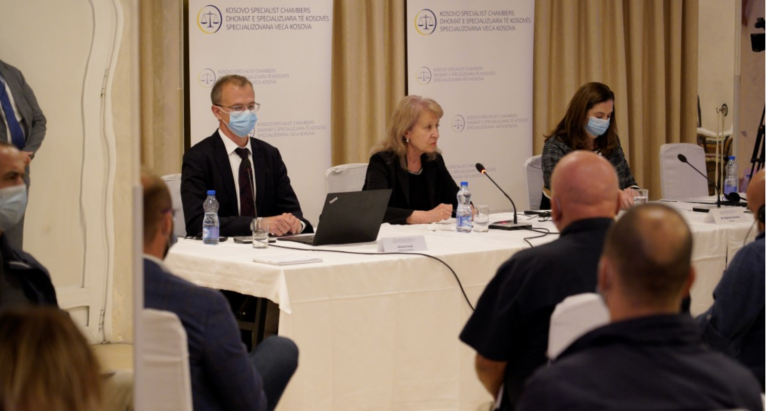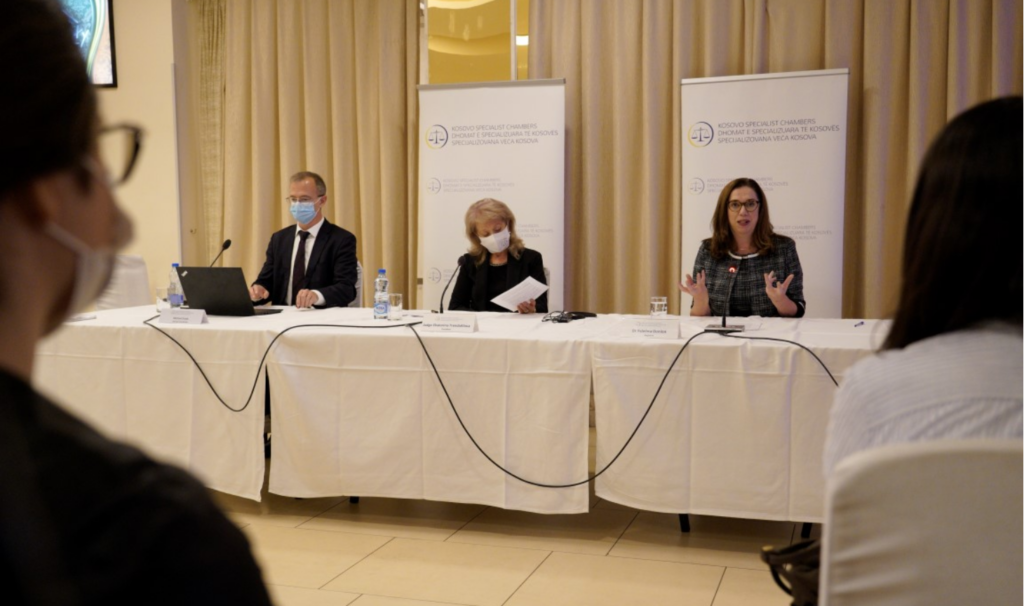8-9 September 2021, Chemnitz, Free State of Saxony, Germany: The Conference of Ministers in charge of European Affairs of the German Länder (EMK) consists of those ministers, senators, state secretaries and state councillors of Germany’s federal states who are responsible for European Affairs, integration and subsidiarity.
The Free State of Saxony is represented by Katja Meier, State Minister for Justice and Democracy, European Affairs and Gender Equality.
The EMK represents the interests of the Länder in European Affairs with respect to the German Federal Government and to the European Union (EU). In order to acknowledge and take into account the views of various Länder representatives, its position on current European policy issues and projects that have been drawn up by means of joint decisions and opinions that are conveyed to the Federal Government, relevant institutions in Brussels and a host of other stakeholders.
Within the EMK, the Länder also coordinate how they intend to raise awareness about European Affairs and promote the idea of Europe.
The Free State of Saxony is chairing the EMK from 1 July 2021 until 30 June 2022. Saxony intends to take this opportunity to work together with the representatives of the other Länder to help make the EU more cohesive, and to ensure that Europe is a more democratic and a more socially and environmentally fairer place.
To underpin its Presidency, Saxony is proposing five priorities for meeting these goals :
- 1. Cross-border cooperation, i.e., German-Czech relations
- 2. EU citizenship and the future of the EU
- 3. The European Green Deal: innovation, climate and energy – implementing the EU’s climate objectives with an emphasis on regions
- 4. The rule of law, democracy and equality5. Flight and migration.
The heart of our programme lies in strengthening a sustainable, democratic, European society and focusing on the EU’s core values. The Saxon programme will continue to develop dynamically in the course of the Presidency, taking into account the hopes, concerns and wishes expressed by all the Länder.
For further information:
Saxony’s Ministry of Justice and Democracy, European Affairs and Gender Equality: https://www.europa.sachsen.de/EMK-aktuelles-und-programm.html
About the Saxon chairmanship: https://www.europa.sachsen.de/download/EMK_EN.pdf
Picture by EMK, Jörg Riethausen. On the image from right to left:
First row:
Roland Theis, State Secretary and Plenipotentiary for European Affairs of the Saarland; Melania Huml, Minister of European and International Affairs of Bavaria; Lucia Puttrich, Minister of Federal and European Affairs of Hesse, Plenipotentiary to the German Federation; Hostess Katja Meier, Minister of Justice and Democracy, European Affairs and Gender Equality of Saxony; Birgit Honé, Minister of Federal and European Affairs, Regional Development of Lower Saxony, Plenipotentiary to the German Federation; Katrin Lange, Minister of Finance and European Affairs of Brandenburg; Kristina Vogt, Senator of Economic, Labour and European Affairs of Bremen.
Second row:
Almut Möller, Plenipotentiary of the Free and Hanseatic City of Hamburg before the German Federation, the European Union and for International Affairs; Britta Lenz, Permanent Representative of Rhineland-Palatinate for Federal, European and Media Affairs; Gerry Woop, State Secretary for European Affairs of the City of Berlin; Claus Christian Claussen, Minister of Justice, European Affairs, Consumers’ Protection and Equal Opportunities of Schleswig-Holstein; Mathias Weilandt, Saxony’s State Secretary for Justice and European Affairs.
Third row:
Florian Hassler, State Secretary for Political Coordination and European Affairs at the State Chancellery of Baden-Württemberg; Thomas Lenz, State Secretary at the Ministry for Home and European Affairs of Mecklenburg-Western Pomerania; Dr. Stephan Holthoff-Pförtner, Minister of Federal, European and International Affairs of North Rhine-Westphalia, Malte Joas Krückels, State Secretary for Media and European Affairs, Plenipotentiary of Thuringia to the German Federation; Dr. Michael Schneider, State Secretary and Plenipotentiary to the German Federation of Saxony-Anhalt.




























